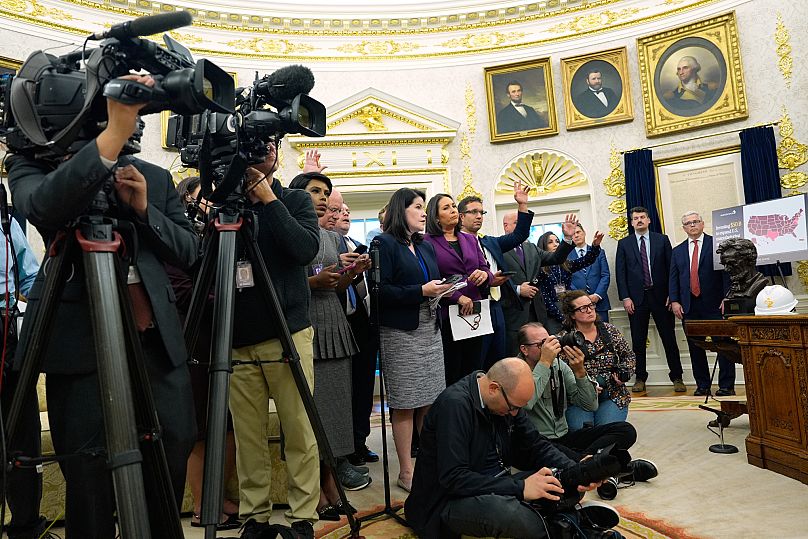Dozens of reporters left the Pentagon in protest over new restrictions imposed by the Trump administration, citing the rules as a threat to press freedom.
Dozens of reporters in the US turned in access badges and left the Pentagon on Wednesday in protest over the Trump administration-imposed restrictions on their work.
The Trump administration has said the new rules were “common sense” to help regulate a “very disruptive” press.
News outlets were nearly unanimous in rejecting new rules imposed by Secretary of Defence Pete Hegseth that would leave journalists vulnerable to expulsion if they sought to report on information classified or otherwise unapproved for release.
On Wednesday afternoon, reporters carried chairs, a copying machine, books and old photos to the parking lot from suddenly abandoned workspaces. Shortly after 4 pm, about 40 to 50 journalists left together after handing in their badges.
“It’s sad, but I’m also really proud of the press corps that we stuck together,” said Nancy Youssef, a reporter for The Atlantic who has had a desk at the Pentagon since 2007.
The rules at the Pentagon came months after a significant security breach when news emerged that Hegseth had twice shared military attack plans on his private phone with his wife, brother and personal lawyer.
However, it is unclear what practical impact the new regulation will have, though news organisations vowed they would continue robust coverage of the military no matter the vantage point.
Trump backs new rules
Speaking to reporters at the White House on Tuesday, Trump backed his defence secretary’s new rules. “I think he finds the press to be very disruptive in terms of world peace,” Trump said. “The press is very dishonest.”
Even before issuing his new press policy, Hegseth, a former Fox News Channel host, had systematically choked off the flow of information.
He has held only two formal press briefings, banned reporters from accessing many parts of the sprawling Pentagon without an escort, and launched investigations into media leaks, according to reports.
Hegseth has defended the new regulation as “common sense” and said the requirement that journalists sign a document outlining them means they acknowledge the rules, not necessarily agree to them.
“What they’re really doing is they want to spoon-feed information to the journalist, and that would be their story. That’s not journalism,” said Jack Keane, a retired US Army general and Fox News analyst, on Hegseth’s former network.
The rules have drawn criticism from the Pentagon Press Association, which has some 101 members representing 56 news groups.
Numerous media outlets, ranging from Newsmax and Fox News to the likes of The New York Times and The Associated Press, advised their reporters to leave rather than sign the new regulations.












